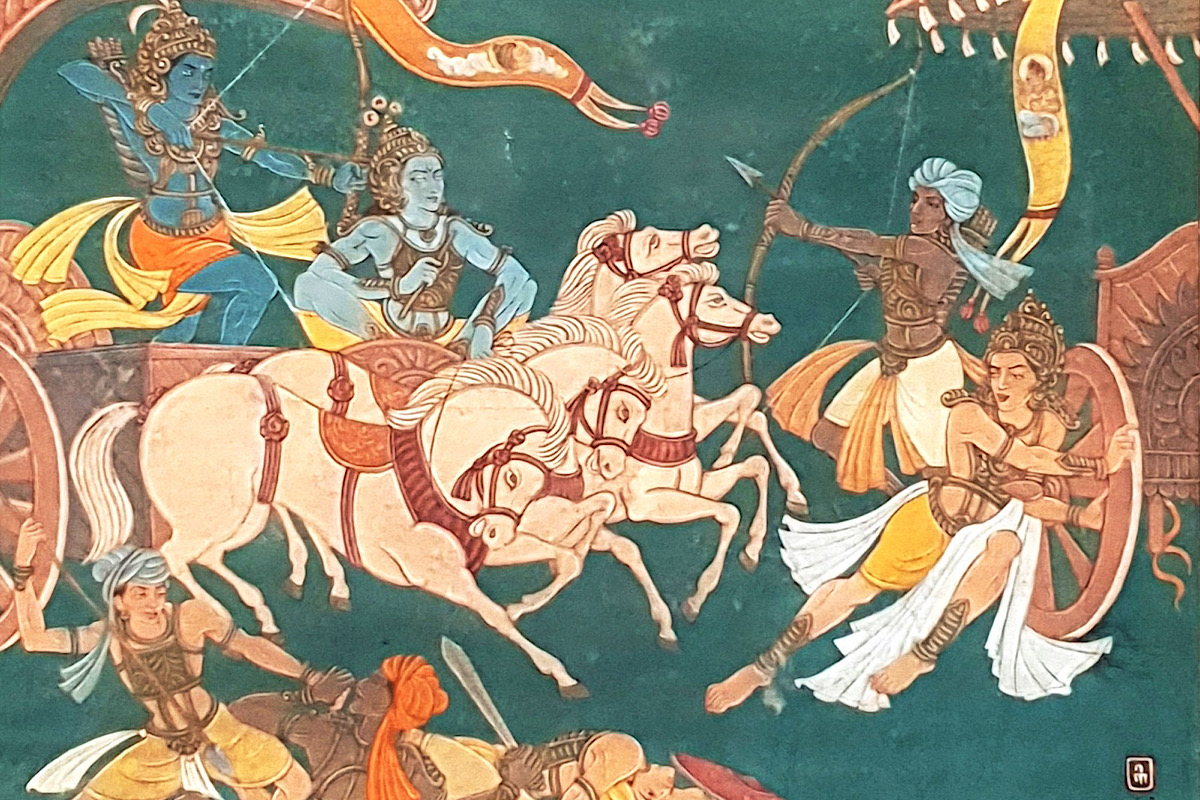In the 21st century, for the very first time, art lovers can behold traditional heritage by visiting an exhibition titled “Nandalal’s Mahabharat” at Chitrakoot Art Gallery, Kolkata. This exhibition showcases Bose’s 30 paintings of the series of Mahabharata, executed in watercolour on paper and tempera on silk (1930–40); it has been curated by Prabhash Kejriwal, the curator of Chitrakoot Art Gallery, and Ashatit Halder, the curator of Charulata.
Nandalal Bose was born to a middle-class family in 1882 on 3 December, at Haveli Kharagpur in the Munger district of Bihar. Bose was a pupil of Abanindranath Tagore and deeply influenced by the murals of the Ajanta Caves since youth. He had become a part of an international circle of artists and writers seeking to receive classical Indian culture, scenes of Indian village life, and Indian mythologies. Bose passionately wanted to study art, but he was never given permission by his family. After repeated failures, he persuaded his family to let him study art at Calcutta’s School of Art. His first exposure to the works of Raja Ravi Varma and Abanindranath Tagore was through the monthly Bengali magazine Probashi, as stated in 1906. Being the first principal of the pioneering art school Kala Bhavan in Shantiniketan (1921), he was among the earliest and most influential art educators in India. Nandalal Bose was best known for his “Indian Style” of paintings; besides working in watercolour and tempera, he is also considered one of the earliest practitioners of linocuts in India. Bose experimented with a new visual language in which artists drew from life and the relationship between man and nature at Kala Bhavan. This theme played a crucial role in his paintings. Bose, in evolving his own style of expression, gathered inspiration from other visual cultures. Having grown up in a Hindu devout family and strongly preferring traditional Indian culture, the stories of the Ramayana and the Mahabharata entered his awareness even as a child. Furthermore, Bose extensively used Hindu mythological narratives and icons in his paintings.
Now the question is: Why did Chitrakoot Art Gallery decide to reunite Bose’s series of Mahabharat paintings many decades later?
The curator of Chitrakoot Art Gallery, Prabhash Kejriwal, says, “We have organised this art exhibition because we want a show of traditional Indian art depicting Indian mythology, especially by a historical artist like Nandalal Bose. This exhibition signifies the value of the Epic Mahabharata in Nandalal Bose’s paintings in this postmodern era.” Bose was greatly inspired to revive the mythological mural painting tradition of India. One of his astonishing mythological paintings is named Abhimanyu Badh (1946–47), a narrative scene from the Mahabharata that portrays the entrapment and killing of the mythological hero, Abhimanyu. This painting illustrates all the drama and the pathos of the doomed, outnumbered hero, making nevertheless a courageous stand.
Kejriwal adds, “The visitors’ feedback makes the exhibition delightful; people can relate the Mahabharata stories and are mesmerised by the craftsmanship of an iconic artist, Nandalal Bose.”
This exhibition will continue till 30th May, from 3:00 pm. to 7:00 pm, at Chitrakoot Art Gallery, Kolkata.
The writer is a freelance contributor












